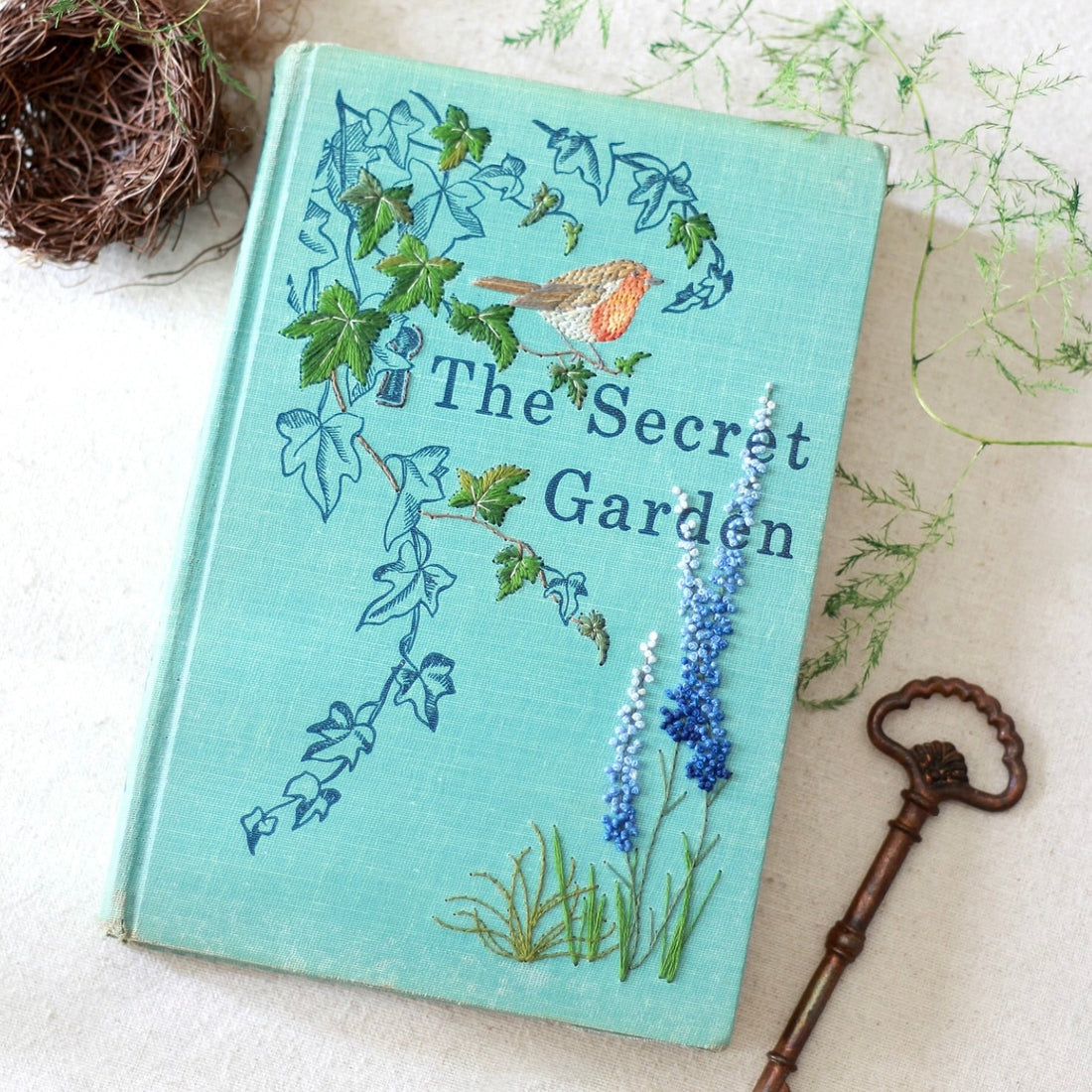
Coveted Covers: Embroidered Books by Linden Acres Design
From a craft room overlooking a chicken coop in her Texas home, fibre artist Lindsay Hawes transforms the two-dimensional surface of book covers into textured textile art. While she is also a keen needle felter and weaver, it has been her videos documenting her patient, precise stitches into the faded covers of old books that have grabbed the attention of thousands.

Hawes’ imagination was first captured by embroidery during the pandemic, when images of thread painting and other decorative needlework appeared on her Pinterest feed. Then began an intense period when she “practiced and researched everything” as she honed her skill and developed her own unique style. Using book covers as her surface for decoration sprang from her innate desire to go beyond the usual and take her work ‘a step further’.

It is clear that the natural world provides Hawes with her biggest source of inspiration. The colours and textures of landscapes and animals are present throughout her designs, using her skill with a needle to form colourful, tactile pieces which invite the viewer in for a closer look. A delicate cobweb creeps over the cover of The Observer’s Book of Garden Flowers, and a spray of peacock feathers adorns Pride and Prejudice, referencing the cover of the famous Victorian illustrated edition. Hawes makes use of all the needlework skills at her disposal - from knotting to stump-work - to make artefacts unlike any other.

Embroidery and books have gone together for hundreds of years, with many exquisite, embroidered book covers produced in the 16th and 17th centuries as a sumptuous, regal alternative to leather. By the late Victorian period, decorating books with embroidered covers was a popular craft practiced within the home, an inventive way to distinguish beloved titles from the piles of identical, mass manufactured books. These covers were often embroidered first onto a woven textile like silk, then added to the book. In contrast Hawes sews directly into the existing buckram or book-cloth cover of a book, her designs informed by already present motifs which she enhances. Or, she will create completely from her own invention, echoing instead the subject of the books themselves. This process leaves no room for error, and to make a mistake is to risk irretrievably damaging the book. But Hawes still allows her designs to emerge in an organic way, and the end result is often much more intricate than originally planned.

Despite frequent pleas from fans for workshops and tutorials, Hawes’ exact methods are not something she is prepared to share, yet. Instead, she chooses to enshroud her work in a little magic and intrigue, knowing that for many the mystery of an artist’s process only adds to their enjoyment.
Guest Post written by Isabel Engleheart: engleheartisabel@gmail.com
-
Further Information:
@lindenacresdesign
-
Image Credits:
Lindsay Hawes
